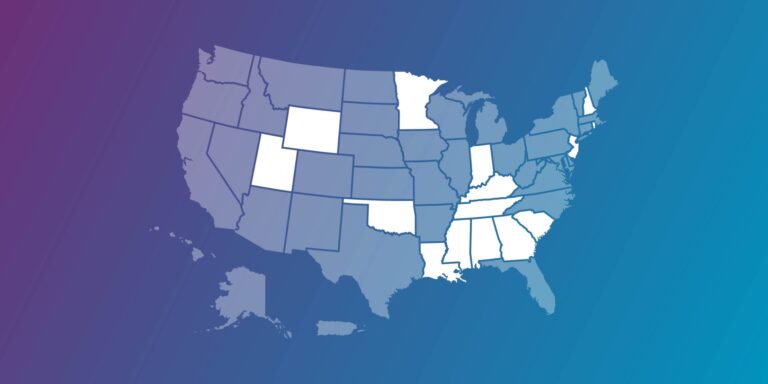The Year of Educational Choice Is Here
Updated December 17, 2021
A decade ago, the Wall Street Journal declared that 2011 was the “Year of School Choice.” Nearly two months ago, my colleague Mike McShane and I observed that not only were dozens of educational choice bills making progress in state legislatures across the nation, but they were also more likely than in prior years to be K-12 education savings accounts (ESAs), which empower families to customize their children’s education using a variety of options beyond schooling. For that reason, we argued that 2021 was on track to become the “Year of Educational Choice.” We wrote:
At least 23 states are considering K-12 education savings accounts, which are an improvement over school vouchers and tax-credit scholarships because they give families much greater freedom and flexibility to customize their child’s education. In addition to tuition, ESAs can be used for tutoring, textbooks, curricular materials, online courses, special education therapy, and more. Unused funds can even be rolled over to save for future educational expenses.
Legislators are also going bigger and bolder than ever before. Whereas most existing educational choice policies are limited to relatively few students, more than a dozen bills this year would make at least half the students in the state eligible for an ESA.
As McShane observed in his recent Forbes column, it has been “hard to keep up” with all the legislative activity, but it is “worth pausing to underscore just how massive the wins for the educational choice movement have been this year.”
Just how massive have the wins been? See for yourself (list updated December 17, 2021):
New Educational Choice Programs (7 states, 7 programs)
- Arkansas (SB 680): New tax-credit scholarship for students from low-income families (up to 200 percent of the federal poverty line) who are switching out of public school or entering kindergarten or first grade.
- Indiana (HEA 1001): New ESA for students with special needs from families earning up to 555 percent of the federal poverty line.
- Kentucky (HB 563): New tax-credit ESA for students from low- and middle-income families (up to about 324 percent of the federal poverty line).
- Missouri (HB 349): New tax-credit ESA for students from low- and middle-income families (up to about 370 percent of the federal poverty line) who are switching out of public school or entering kindergarten or first grade. (Note: this bill passed both legislative chambers but is still pending the governor’s signature.)
- New Hampshire (HB 2): New ESA for students from low- and middle-income families (up to 300 percent of the federal poverty line).
- Ohio (HB 110): New universal-eligibility tax-credit scholarship (with priority given to low-income families).
- West Virginia (HB 2013): New ESA for all students switching out of public school or entering kindergarten or first grade.
Additionally, Ohio enacted two new individual tax credit policies (a homeschooling credit and a nonchartered private school credit).
Expanded Educational Choice Programs (15 states, 23 programs)
- Arizona (SB 1828): Expanded tax credits available via Lexie’s Law for Disabled and Displaced Students by $1 million.
- Arkansas (HB 1446): Expanded the Succeed Scholarship Program to include the children of active-duty or reserve members of the U.S. military.
- Florida (HB 7045): Expanded the state’s voucher, tax-credit scholarship, and ESA policies. The bill raises the income thresholds on the state’s tax-credit scholarship and school voucher policies for low- and middle-income students to 375 percent of the federal poverty line, with priority given to lower-income families. It also merges the state’s two educational choice policies for students with special needs—the McKay voucher and the Gardiner Education Savings Account—into a new ESA policy that is a part of the state’s Family Empowerment Scholarship (FES) policy. Eligibility for the also expanded to include students who are dependents of a member of the U.S. Armed Forces and adopted children, and the scholarship values were increased to 100 percent of the state’s per-student allocation for public education. The bill also eliminates the “prior public” attendance requirement for students from families with limited means.
- Georgia (SB 47): Expanded eligibility for the Georgia Special Needs Scholarship Program and expands the eligible categories of expenditures beyond private school tuition to include tutoring, uniforms, transportation, meals, summer school programs, and physical, speech and occupational therapy.
- Indiana (HEA 1001): Expanded the state’s voucher and tax-credit scholarship policies by raising the income cap to 555 percent of the federal poverty line. The voucher amounts were also increased to 90 percent of per-pupil spending in public schools for every eligible student.
- Iowa (HF 847): Increased the tax credits available via the state’s tax-credit scholarship policy from $15 million to $20 million and raises the credit value from 65 percent to 75 percent.
- Kansas (HB 2134): Expanded eligibility for the state’s tax-credit scholarship policy to include students in grades K-8 from low-income families without any restrictions based on the school to which they are assigned (previously, students had to be assigned to one of the 100 lowest-performing schools in the state). The income eligibility threshold was also raised to 185 percent of the federal poverty line.
- Maryland (HB 588): Fully funded the state’s Broadening Options and Opportunities for Students Today (BOOST) vouchers at $10 million for the first time in the program’s history.
- Montana (HB 279): Expanded the state’s tax-credit scholarship policy by raising the per-donor tax credit cap from $150 to $200,000 and raising the “escalator” on the total cap on tax credits from 10 percent to 20 percent.
- Nevada (AB 495): The Nevada legislature passed AB 495, a budget bill that expands the state’s Educational Choice Scholarship program by increasing the amount of tax credits available by nearly $5 million. The bill also makes important technical fixes that will allow scholarship-granting organizations to serve new children. The bill is now awaiting the governor’s signature.
- North Carolina (SB 105): Expanded the Opportunity Scholarship (OSP) voucher value $4,200 per year to 90 percent of the average per pupil state K-12 allocation based on the prior fiscal year. This is projected to be an estimated average of $5,850 per year. Eligibility expanded from 150 percent to 175 percent of the family household income required to qualify for the federal free and reduced-price lunch program. Total funding cap will see an increase to $240 million by year 2032. The bill also combined the Disability Scholarship Grant and Personal Education Savings Account to create the Personal Education Student Account for Children with Disabilities Program. The bill increases the funding for the new program above the levels of the previous programs and includes a provision to grow the funding by $1 million each year. This new program’s award will include the state allocation for children with disabilities plus 85 percent of the average state per pupil allocation. Additionally, students with certain disabilities such as autism, hearing impairment or visual impairment can qualify for aid up to $17,000 per student.
- Ohio (HB 110): Expanded eligibility for and increased scholarship values of the statewide Educational Choice Scholarship program and Cleveland Scholarship program. Increased scholarship values for the Income-Based Scholarships, Jon Peterson Scholarships for Students with Special Needs and the Autism Scholarships.
- Oklahoma (SB 1080): Expanded the state’s tax-credit scholarship policy by raising the total amount of tax credits from $3.5 million to $25 million.
- Pennsylvania (SB 381): Expanded tax credits available via the Educational Improvement Tax Credit to provide scholarships for students from low- and middle-income families by $40 million.
- South Dakota (SB 175): Expanded the state’s tax-credit scholarship policy by removing the “prior year public” attendance requirement.
In total, 19 states have enacted 32 new or expanded educational choice policies so far this year. Stay tuned!




